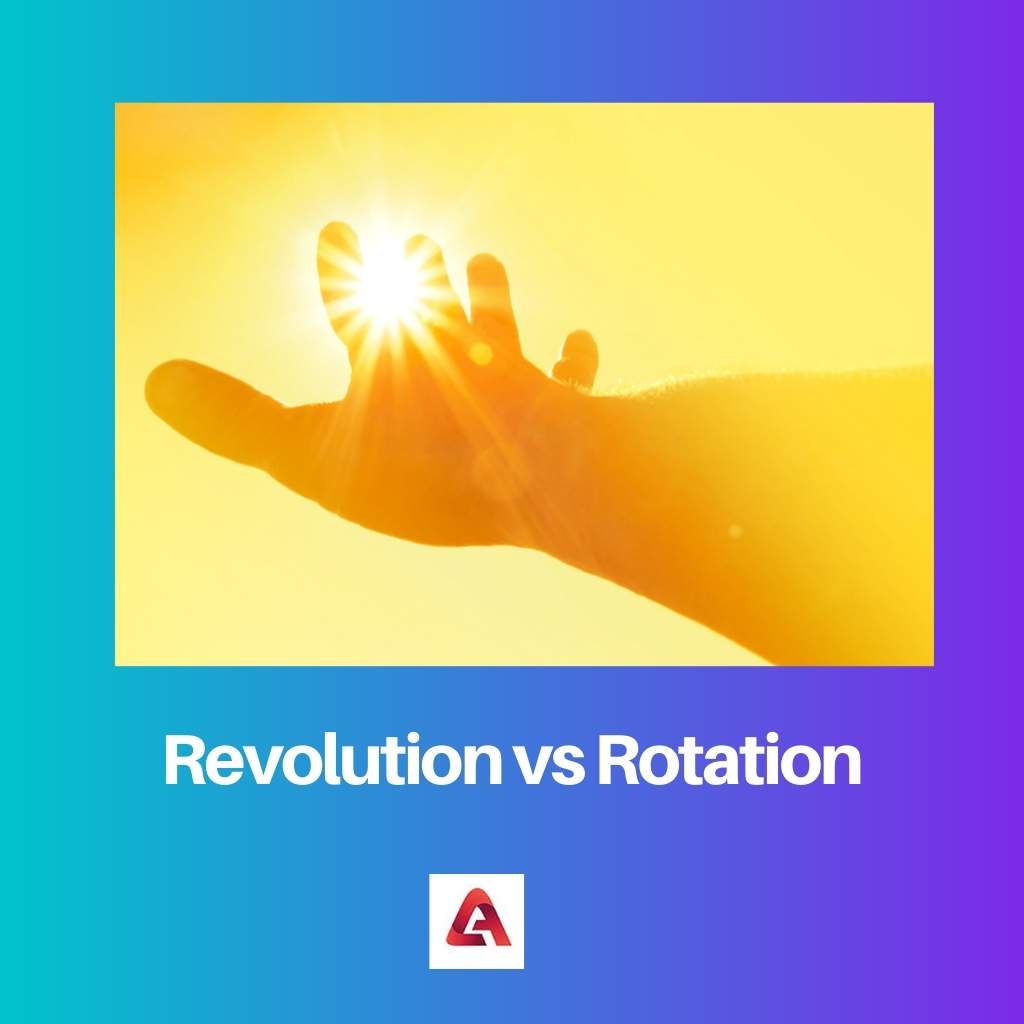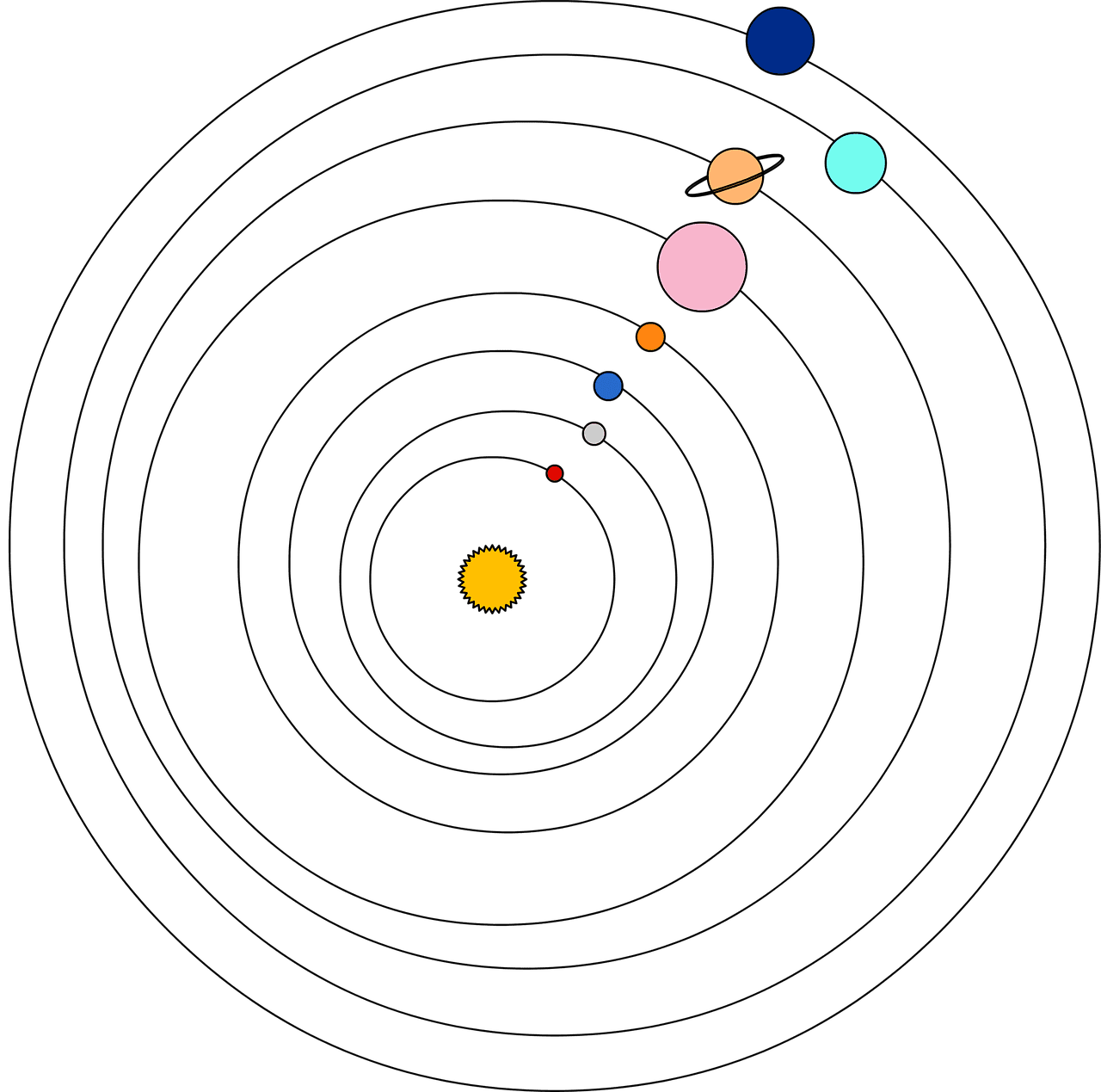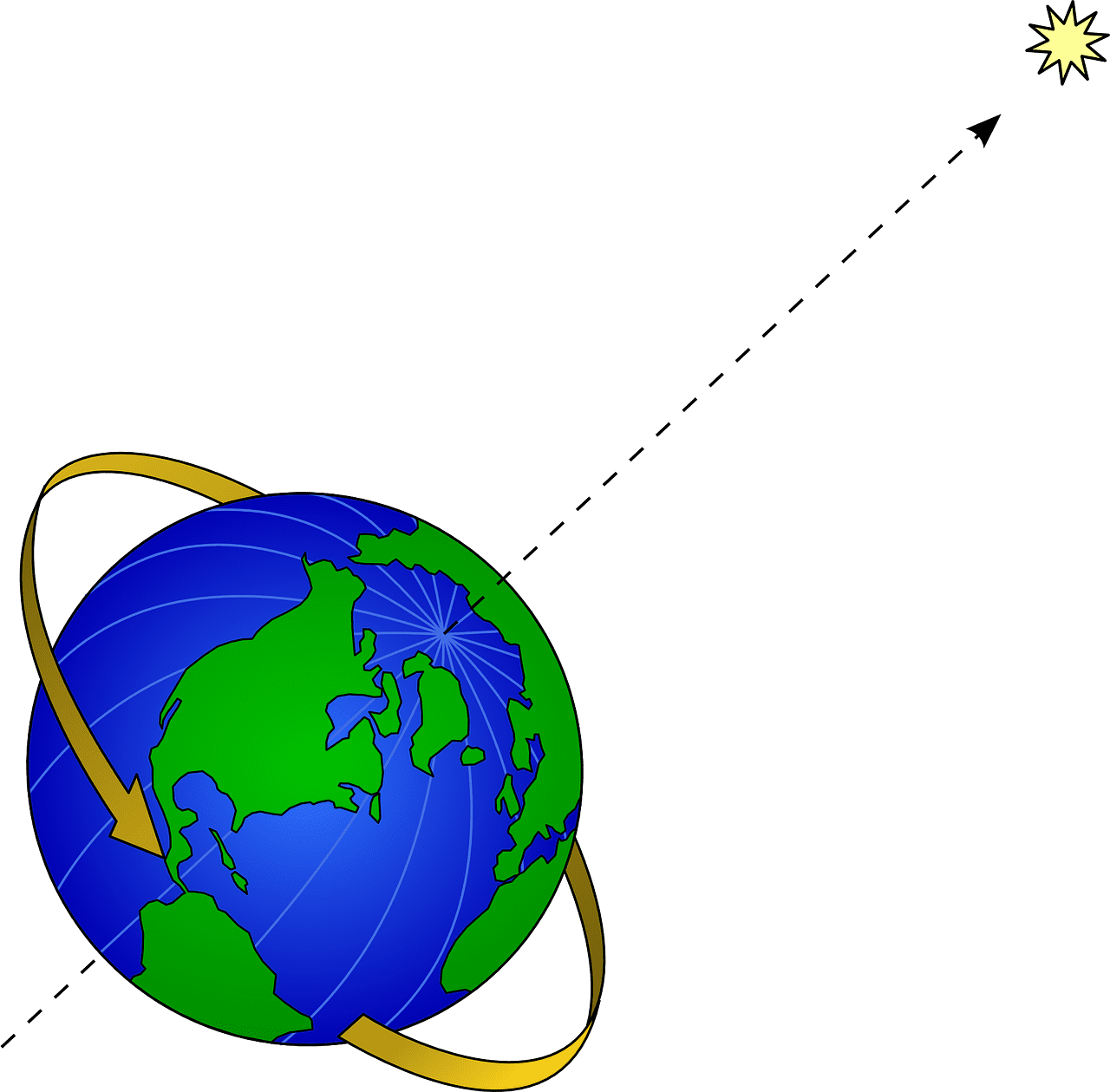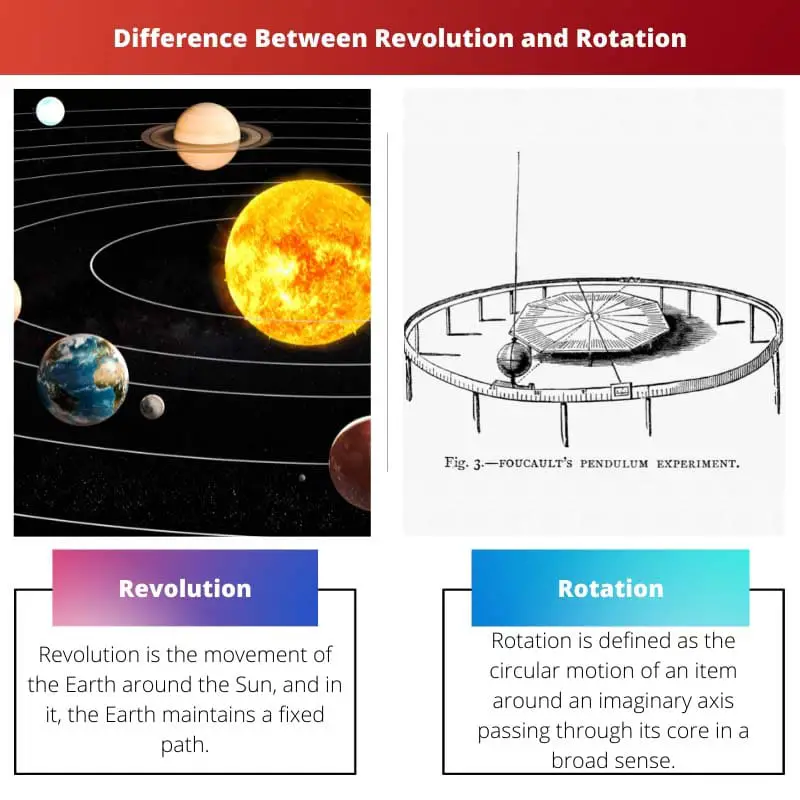The Earth revolves around the Sun and rotates on its axis. There are important differences in the concepts of revolution and rotation.
Revolution refers to an object’s rotation around an external point, and rotation refers to the circular motion of an object around a fixed centre or axis.
Key Takeaways
- Revolution refers to the movement of an object around another object, while rotation refers to the spinning of an object around its axis.
- Revolution determines the length of a year, while rotation determines the length of a day.
- Earth rotates once every 24 hours and revolves around the sun once every 365.25 days.
Revolution vs Rotation
Revolution refers to the movement of an object in a circular motion around a fixed axis. The Earth’s revolution around the sun causes the change in seasons. Rotation refers to the circular movement of an object around an axis. The Earth’s rotation causes changes in day and night.

In revolution, an object travels in a circular direction around a centre. It rotates along a fixed axis. Earth revolves in orbit in 365 days, 6 hours, 9 minutes around the Sun.
Earth has an elliptical orbit. The Earth revolves around the Sun from west to east in an anticlockwise orientation.
Rotation refers to the motion of an object around an axis in a circular direction. The Earth revolves on the imaginary axis, which passes through the middle of the poles.
The rotation of the Earth is a well-known occurrence of rotation. It takes approximately 24 hours to complete. The Earth spins around the Sun on its axis.
Comparison Table
| Parameters of Comparison | Revolution | Rotation |
|---|---|---|
| Definition | Revolution is the movement of an object around another object. | The spinning of an item around its invisible axis is defined as rotation. |
| Time | The Earth takes a year or 365 days to complete one full revolution around the Sun. | The Earth takes nearly 24 hours to complete one rotation on its axis. |
| Axis | External | Internal |
| Direction of movement | The Earth’s revolution is counterclockwise. | The Earth rotates from the direction of west to east. |
| Position | Changes happen in the position of the object. | No changes in position. |
| Results | Seasonal changes. | Day and night. |
What is Revolution?
Revolution is the movement of the Earth around the Sun, and in it, the Earth maintains a fixed path. The Earth revolves around the Sun in an anticlockwise direction.
It takes almost 365 days and 6 hours to finish a circle. Furthermore, in the instance of revolution, an object travels around another element in a circular motion.
This phenomenon may be observed in planetary movements when one planet revolves around a star or when a satellite revolves around its designated planet.
The Earth orbits the Sun, and in the same way, the Moon orbits the Earth. The orbits of planets and moons are elliptical. A planet’s orbital revolution takes a year, while the Moon’s requires a month.
Summer turns into winter as a result of the Earth’s revolution. The Earth’s rotation and revolution impact wind direction, temperature, ocean currents, and precipitation, resulting in worldwide climate change.
Furthermore, the Sun’s gravity keeps Earth and the other planets in their orbits around the star.
The Earth’s axis is slanted by 23.45 degrees as it circles the Sun. The Earth spins once every 24 hours around its axis. The effects of the Earth’s revolution are different for the different regions of the planet because the axis is tilted.

What is Rotation?
Rotation is defined as the circular motion of an item around an imaginary axis passing through its core in a broad sense.
Earth rotates on its axis, as well as there are variations in the direction of the rotation axis in space.
The rotation of the Earth happens in a progressive motion, and it rotates eastward.
The Earth rotates on its axis. The rotational axis is an imaginary line, and the three-dimensional objects rotate around it.
Earth’s rotation is the most common example of rotation. It takes nearly 24 hours to complete and causes the phenomenon of day and night.
The gravitational pull of both the Sun and the Moon due to the Earth’s rotation causes tides.
Seas wouldn’t rise and fall with the tide if the Earth didn’t revolve. Tides play a vital role in the life cycle of the Earth.
The Sun seems to appear in the east and set in the west because the Earth is rotating from west to east. However, this is due to the Earth rotating rather than the Sun moving.
On the side facing the Sun, it is daylight, while on the other side, it is night.

Main Differences Between Revolution and Rotation
- Revolution is the movement of an object around another different object. On the other hand, in rotation, an object spins around its invisible axis.
- In the revolution, the object travels along an elliptical path with a constant change in location. On the other hand, during rotation, the item rotates around its axis, maintaining the fixed position.
- Revolution happens when the Earth revolves around the Sun. On the other side, the Earth rotates on its axis, and it is called rotation.
- Seasonal changes are the effect of the Earth’s revolution. In contrast, day and night is the effect of the Earth’s rotation.
- Revolution is a lengthy process than rotation. The rotation of the Earth on its axis takes approximately 24 hours. In contrast, the revolution of the Earth takes 365 days or a year to complete.
- Common instances of revolution include driving around a curve in an automobile, riding on a children’s merry-go-round, and so on. In contrast, some examples of rotation are spinning tops, clock hands, and so on.




